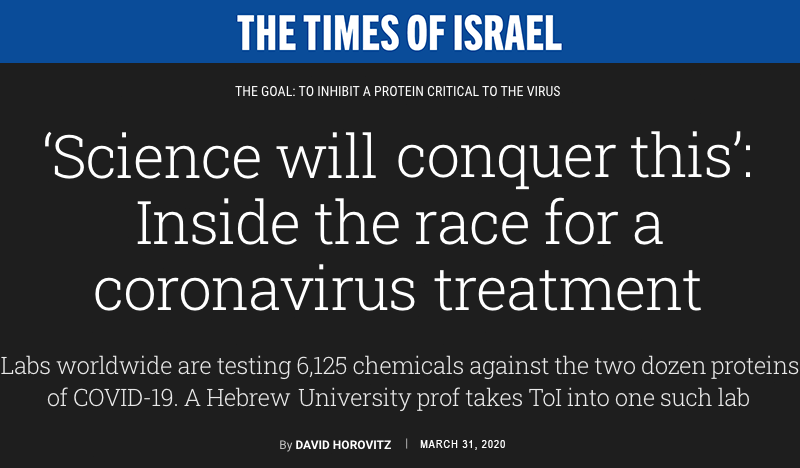
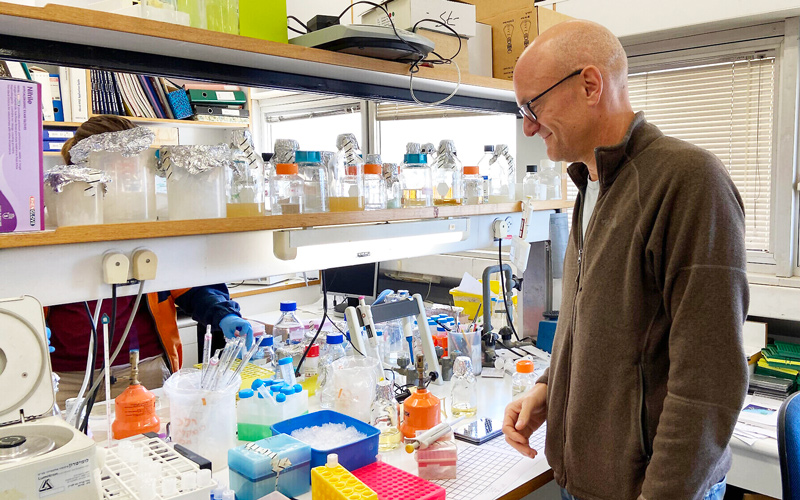
In a small lab on the Givat Ram campus of the Hebrew University in Jerusalem, Professor Shy Arkin and his team of three are “throwing chemicals” at some of the proteins that constitute the coronavirus, hoping that one or more of them will stick.
Or at least that’s the kind of non-scientific language Arkin helpfully uses to describe the frantic research that is taking place in his and thousands of other labs around the world, in the battle to counter the pandemic that has gradually brought much of human endeavor and interaction to a near-halt.
In whichever constrained environment this article finds you, therefore, you’ll be pleased to hear that he’s optimistic. The virus, Arkin acknowledges, is particularly devastating among the elderly and other high-risk groups. But social distancing is at least a partially effective interim measure, buying time for the scientific community to come up with a real solution. And that solution, he is confident, will be found.
Arkin is among the scientists who feel they have something of a head start in the race to stop the pandemic, having spent close to two decades studying the components of influenza and SARS 1, the current COVID-19’s “remarkably similar predecessor,” which killed 774 people in 2002-3. And he says that at least some of COVID-19’s two dozen or so components are proteins that are known to be “drug-able” — that scientists have been able to inhibit.
The particular race in which his and all those thousands of other labs are frantically engaged is to test some 6,000 chemicals — drugs that are already approved as non-toxic to humans — against the virus’s constituent compounds: “You throw chemicals at it… If one of the chemicals inhibits a component, and that component is crucial to the virus, the chemical is immediately a potential antivirus drug.”
Sounds simple? Well, yes and no, as this interview attempts to make clear.
It was conducted on Sunday, first in Arkin’s office and then, briefly, in his small lab — one of the very few places on the university campus still working. We kept the obligatory two meters apart as we spoke — a task that became slightly more difficult when we entered the lab, and two members of his team showed me some of the testing process.
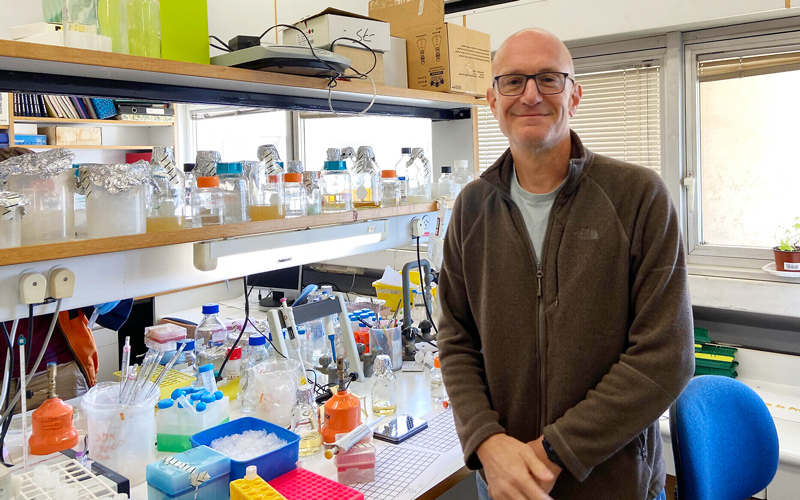
The Times of Israel: So, how goes the search for a coronavirus treatment?
Prof. Shy Arkin: We’re working in frantic mode. We’re a small team, and we are serving chemicals against a component of the virus that we identified many years ago.
Serving chemicals?
Via an assay — a test to see if the virus protein is functional. You throw chemicals at it. If one of the chemicals inhibits a component, it is immediately a potential antivirus drug.
How many components are there in the virus?
About two dozen. A virus generally has a dozen to two dozen. Not all of them are “drug-able.” The component that we are focused on belongs to a family of proteins that is drug-able, that scientists have inhibited.
And if you can inhibit it in COVID-19?
You need to ensure it is crucial to the virus. If the answer is yes, then great. Labs around the world are targeting the two dozen or so components.
Influenza is simpler; it has about a dozen, and Tamiflu inhibits one of the proteins and stops the flu. In HIV, because the virus changes, they throw several different drugs on it at the same time — the famous cocktail, which inhibits several different components, so the probability of the virus evading each and every one of them at the same time is vanishingly small.
But COVID-19 is more simple and more straightforward, theoretically? It’s not mutating?
There are variants of it out there, but it doesn’t mutate as rapidly as HIV, as far as we know.
What can you tell me about the nature of the chemicals that you’re throwing at it?
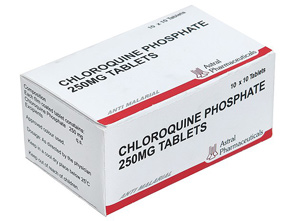
What we’re trying to do — and again, I would hope and anticipate that others are doing — is trying to repurpose drugs. Because even if today, right now, I find a brand new chemical that inhibits the virus, you’re talking about a long period of time before it could be used in humans. Repurposing decreases that time span amazingly . Your doctor basically says, just take that. He’ll prescribe it for you for, I don’t know, hair loss, and you go ahead and you take it. Off target, off label. It’s done all the time.
It’s been used with credible success?
The medical community, I think, is still out on that.
OK. So you’re choosing chemicals to throw at these proteins?
Right.
Remember, you’re talking to a complete layman writing mainly for non-experts. So that would sound very simple.
Correct.
Unless there are billions of chemicals.
No, no, there are about 6,000 chemicals that are approved drugs or at least have passed the stage of what’s called Phase 1.
Phase 1 basically means not toxic. Phase 2 and 3 means efficacious. But in terms of testing or repurposing, I don’t care if a drug is efficacious against, say, hair loss . As long as it’s not toxic, I can use it.
Arkin turns his computer screen toward me, and refers me to a website.
You see the drug repurposing hub: There are 6,125 unique compounds.
And how hard is it to “throw a chemical at a protein”?
Well, that depends on how successful and simple your assay is. I can tell you, we’ve already tested about 300 chemicals. And we found two or three — they are non-satisfactory. So they work, but they’re not perfect. We want them to be better.
But I would imagine if out of 300 we found two or three that are somewhat promising, then out of the 6,000, we and labs the world over might find those that are better.
The two or three that you found so far, once you’ve tested them and they’re only ‘non-satisfactory,’ that means they’re irrelevant? Or, if I was dying of this disease, you’d be saying, hey, take that?
The last bit that is missing from our research — and also, I would imagine for a huge number of other labs in the world, each taking their component, in their particular assay — is to try this on the real virus, either an animal model or tissue culture. We can’t do that here.
You need a bio-safety lab that is capable of handling this virus. In Israel, there’s only one — our good friends in Ness Ziona. In English it’s called the IIBR — the Israel Institute for Biological Research.
What they need to do is to throw on either an animal model, which I don’t know if they have yet, or a tissue culture, a human tissue culture, which has the virus sort of living on it. And then see if it inhibits it.
You’ve got two or three drugs that you don’t think are worth sending to Ness Ziona yet…?
They’re in the questionable phase. They’re not perfect, but it’s difficult to know. We have initial indications; the eventual results might be better or worse.
The hierarchy is functioning? If you come across something that you think, wow, this really can make a difference, you would send it to Ness Ziona?
Correct.
Who are presumably being inundated already with requests?
Correct. Which, by the way, is a good thing. It means that they’re actively trying different solutions.
Those 6,125 unique compounds — you would have thought that weeks if not months into this virus crisis, they would all have been thrown at the 24 or so components of the virus, given the might of American science, for example …?
Well, we’re not months on this. To develop a brand new assay for a particular protein is not that quick.
So the assay is not straightforward? You gave a very layman’s term: “throwing” it at the protein. But in fact it’s far more complicated…?
In a test tube, you have an experiment, in which you have an outcome. The outcome: Maybe blue works, red doesn’t. And then you put a chemical there. One of those 6,000 or so chemicals. And then you see, ooh, does my solution turn from blue to red?
Devising that particular test tube, that assay, is not trivial.
And you’ve been able to devise tests for 300 chemicals.
We have tried 300 chemicals on one component.
We have devised an assay that is amenable to screen a large number of chemicals. This is what we’ve been doing in the past two decades or so: studying a very close relative of this particular virus and other similar viruses.
You’re not starting from scratch 6,125 times. You’ve got a test, an assay, that enables you to…
If those 6,125 chemicals were here on my shelf, we’d be able to screen them all.
Why are they not here on your shelf?
Because they didn’t have a reason to be here on my shelf before the beginning of March. Right now, other than directing the research and the group, what I’m doing is writing grants like crazy, trying to get money to fund this operation.
So if you ran the world and flicked your fingers, you’d be presiding over a bank of these 6,125 chemicals, with an assay enabling you to throw them all at one of the 24 proteins in this virus.
Correct
How long would that take you?
Probably two months.
And the signs so far would suggest to you that somewhere in those 6,125 there’s going to be something that works pretty effectively.
That’s a reasonable assumption.
The problem is that research around the world doesn’t work that way… People don’t pay for research that wasn’t seen as critical ahead of time. So there’s a bit of a lag.
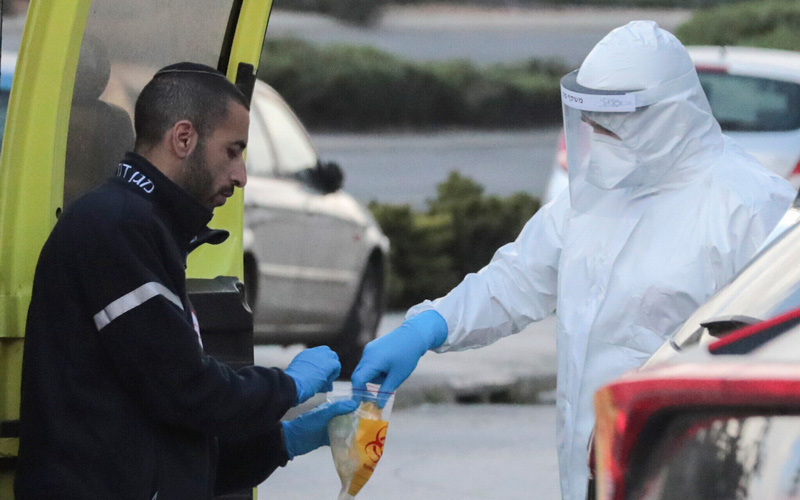
Which presumably after these few weeks is starting to be made up?
Yes. I’m very happy to see that practically every agency in Israel is immediately saying, Look, people, just give us some ideas, and we’ll provide you with funding very quickly.
I’ve been amazed by the continuous generosity of the Friends of the Hebrew University, that contacted me directly and basically told me, Shy, what do you need? We’ll send it to you. People are saying that this is a clear and present danger. Everyone’s trying to pitch in.
On the phone to me a couple of weeks ago, you were skeptical about some of the assessments of the danger, as unnecessarily alarmist.
Correct. I stand by my prediction: This is not going to fell millions of people around the world.
But wouldn’t it fell millions of people if we weren’t all distancing, especially from the elderly?
Sure. But if you have a solution against something… A strep throat would result in tremendous morbidity and mortality were we not taking antibiotics. So there are things to do . Many of them are very unpleasant. I mean, we all want to celebrate the Passover Seder. But simply look at the example of what’s taking place in China, where a fifth of the world population . The number of new cases has dropped away.
Look at the Johns Hopkins site. Spain is doing much worse. But if you look at Italy, which had a terrible death rate, the number of new cases every day is not that different. They’re out of the exponential figures. Obviously, the deaths that you’re seeing today are due to the infections of three, four weeks ago. But what will we see in another three weeks? I mean, it’s plateaued.
The number of new cases in Italy has plateaued?
The number of new cases is about the same each day. It’s under control. You’ll see more deaths because they have completely saturated their health care system. But in terms of stopping continuous growth, what you need to do is to decrease the number of infections. Social distancing does the job.
You’re sounding scientific and rigorous, but social distancing is a radical method! Basically, we’ve shut down much of society. It’s a pretty atypical situation we’re in here.
Very atypical! It would be more correct to say: never previously experienced.
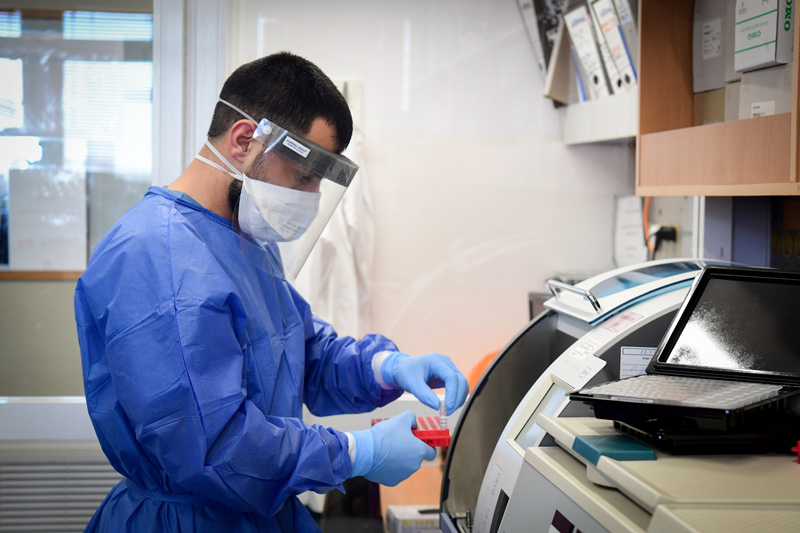
What we’re doing right now is buying time for the medical community, which is working frantically to come up with solutions. And I’m absolutely certain that it will. I’m not saying my group will. But one of a very large number of such groups around the world will.
Thousands?
Thousands… They will come up with solutions.
Is this the taste of things to come? Does this pandemic signal that humanity has entered some new era where we’re going to be battered by these kind of viruses more often, or maybe worse?
Hopefully this is a wake-up call. It’s quite unbelievable that we had a rehearsal for COVID 19 . We had it in 2003.
And the effort that was expended by the West to do something about this was practically zero.
Because it only killed 700-plus people, so everyone just stopped trying?
It disappeared. You have to realize that it takes the scientific community a bit of time to react to something brand new. And by the time people started saying “I’ll forget the work that I’m doing routinely, I will focus on ,” the disease had disappeared. It didn’t really inflict a lot of harm on the West. Complacency is the best word to describe the response.
And the lesson we should learn is…?
Virology departments should not disappear. And I’m not speaking as a virologist. I’m a biochemist and I study specific components in viruses.
But, again, does the fact that we had SARS 1 some 17-18 years ago and now we have SARS 2, mean we should be bracing for worse, or is it a quirk? Has this stuff been happening for centuries, and science never recognized it for what it was? People would die in large numbers…
No, I don’t think so. We have had past outbreaks. We have an outbreak every year of the flu that exacts a significant mortality. But it’s one which we know how to predict ahead of time. So in the United States, for instance, you say, OK, we’re going to have 60,000 deaths in the States because of the flu this year. We’ve learned to live with that. It’s not going to be much more. And unfortunately, it’s probably not going to be much less. But we know what the outcome is. The problem with this thing is that we don’t know the outcome.
Will we have more of these? The answer is absolutely yes, but we don’t know when. So there was Ebola, there was Zika, there was the swine flu. All of those really didn’t affect the West dramatically. They were not terrifying. This thing is.
I don’t want to use the term that we were “lucky” before. But, pandemics do happen every so often. They do. What you need to ensure is that you’re prepared.
Which means that you invest in the science that will help you tackle them quicker?
I’ll give you a very simple example. If you wrote a grant application before December 2019 to any research funding agency, and told them, “I want to study coronaviruses,” people would ask, “why would you want to study a virus family that infects mostly animals? Why not go ahead and study, let’s say, hepatitis C virus or hepatitis B or HIV or influenza?”
You could at least arm yourself with an answer: “Well, do you remember what happened in 2002-3 with SARS?” But if you didn’t even have that, you know, people would laugh at you. They would simply laugh at you.
Well, they presumably won’t laugh now.
Right now, they won’t. So I would say, let’s ensure that we map better those viruses that are infecting animals and that can jump to us — namely mammals and birds.
There are other viruses out there right now that we’re not looking at, because they never made that jump, potentially could do so, and potentially could be as devastating or worse than this one?
There could be. Viruses are so plentiful that we haven’t scratched the surface of how many of them are there. Coronaviruses were a good bet because they’ve shown us they can twice before — with SARS and MERS — and because they exact a lot of mortality and morbidity in animals that we’re familiar with.
If we try and take a step back from this, and given that we want to not overwhelm our health services and governments don’t want to invest more money in them, shouldn’t it be illegal to smoke, for example? The big crisis here has been that there aren’t going to be enough ventilators if it hits really hard. But half a million people die in America every year from smoking-related diseases. We see the hysteria about this unknown virus, as opposed to the indifference to a known vast killer.
It’s the difference between the danger that you know, and the unknown.

I completely agree: The fact that smoking is still legal — or the fact that the police might incarcerate someone who is intoxicated and just, you know, let them let the hangover rub off and then release them — to my mind, that’s ridiculous.
Nearly every single health parameter that you have is lowered by smoking. Your probability of getting a heart attack, your probability of getting “just fill in the disease,” increases when you’re smoking. The financial toll that it exacts on the health system is unbelievable.
The question of why this virus terrifies us so much more than smoking — even though smoking, you’re absolutely right to say, kills more people per year than this virus will probably end up killing — lies more in the realms of psychology than biochemistry. Smoking kills you over a very long period of time. The moment that you smoke, you don’t instantly put yourself at risk of going to the ICU, while this thing does pose that risk. And while secondhand smoking is infectious in a way, this thing is so much more.
Okay. Now, what can you show me about your actual testing work?
I can show you the robots. We don’t take each and every one of those chemicals and pipette them individually, and monitor every single test tube because, first, that takes a long time. But even worse, it’s unreliable due to human error; we make mistakes. So everything that we try to do, we try to do in replicates, in order to get good statistics.
So enter the robots. The robot is basically a fancy liquid handling system. It takes a test tube over here, and it takes solutions from A, B, C and D, and mixes them in the ratios that you’ve programmed to. And then it can actually monitor what’s happening in that test tube. That’s what I can show you. And this is very commonplace.
This is what’s going on in thousands of labs all over the world now?
Correct.
As they try to throw the 6,125 drugs at the two dozen virus components?
Yes, and many pharmaceutical industries have better libraries . I’m really convinced that the scientific community will be able to conquer this. Because there is no reason ahead of time, when you look at the virus, that this is going to be a very difficult target — unlike HIV. Especially because we were able to develop a vaccine against other members of this family. So why not this? This is not going to be the end of humanity.
But what I can’t understand is people who are saying, “Oh, you know, let’s allow everyone to just acquire immunity as a herd. And okay, all those that are above 80 years old, you know, what can I do? Tough. You lived your life.” That’s insane.
Arkin leads me along the corridor to his lab, and introduces me to his team.
This is Dr. Prabhat Tomar. This is Ariella Shalev. Prabhat is the person who’s actually running the robot.
Arkin points to some flat, dark gray rectangles a little larger than playing cards: These are the plates where every one of these tests are carried out. This is called a 96-well plate. Each of these wells is a test tube on its own. And we can have eight of these running simultaneously. So eight times 96 — a fair bit of testing that you’re doing simultaneously.
We monitor the absorption — that is the color of each one of those wells — in this machine over here. And if you can just scoot over there, you can see what it looks like.
Arkin motions me toward the machine in the photograph below:
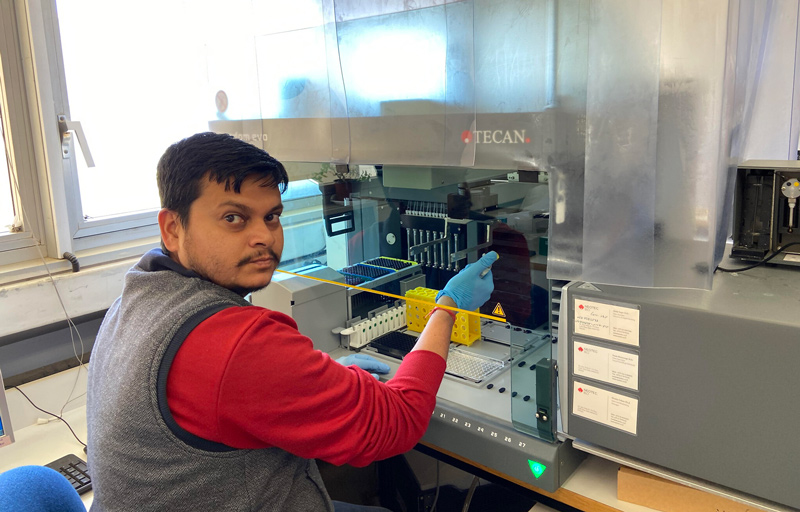
How long does this process take?
A few hours.
Normally, Prabhat plans an experiment and then sets up one or two or three of these plates and we come back the next day and it’s done. The pharmaceutical industry probably has machines that can do so much more.
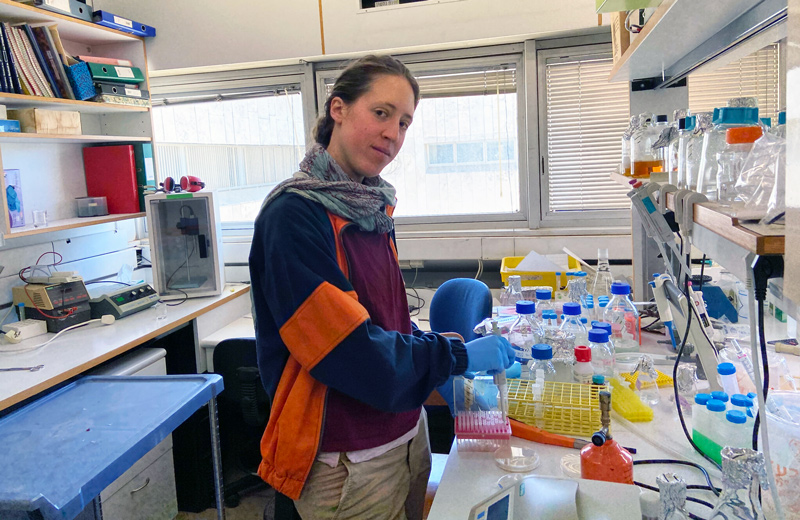
And so far, two or three that were somewhat encouraging?
Yeah, two or three were somewhat encouraging.
Arkin leads me out of the lab, and to the exit of the building, almost all of whose offices are closed.
“If you have a great success, please let me know,” I say.
“Will do,” he promises, heading back to the race.